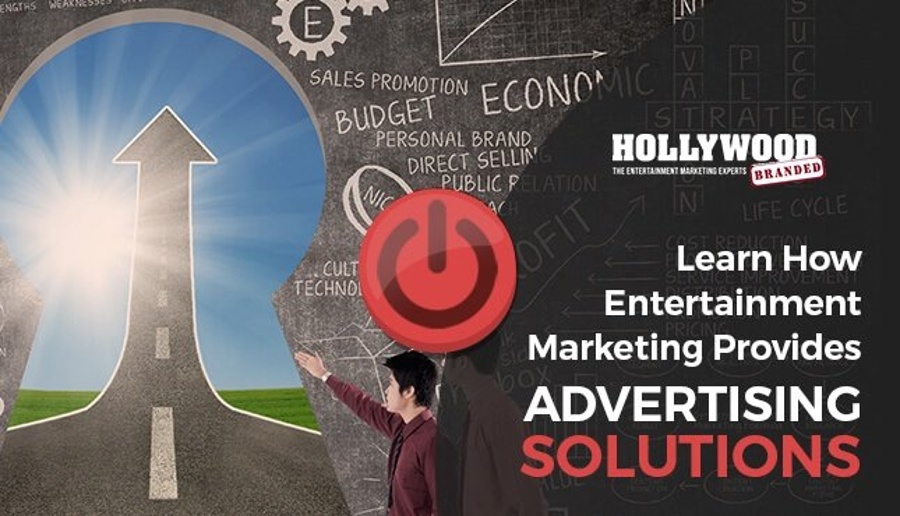Virtual Reality – The Future Of Product Placement?
Table Of Contents
VIRTUAL EXPERIENCES ARE PIONEERING A NEW WORLD FOR BRAND MARKETERS
Product Placement has long been a part of video games, mostly in the form of “native ads.” By definition, native ads include billboards, signs, and other advertisements that lend reality to the setting of the video game while also promoting real-world brands. They don't necessarily stand out with messaging - but they are in the 'world' of the game experience.
With the acquisition of Oculus Rift by Facebook and the rumblings throughout the tech world about virtual reality, Virtual Reality (VR) may add a whole new level to product placement and brand integration with video games over the years to come. In this blog, Hollywood Branded takes a look at the future of product placement and video games, especially as it relates to virtual reality.

What Is Virtual Reality?
Virtual reality is the combination of software and hardware that makes the user feel immersed in a world built by programmers and designers and where the user can interact with and in that environment. Most people think of video games and those who play them when they think of VR, but the truth is, that VR could change the way we look at real estate, see exotic and faraway places, interact with family and friends, and even help surgeons perform remote surgeries or train soldiers for combat.
With this being said, it’s not hard to imagine how much VR could change marketing and advertising. With an immersive experience and even more opportunities for native ads in video games as well, brands have a potential to be involved in a cutting-edge form of entertainment marketing.

Media Companies Are Jumping On Board
According to Variety, Fox Sports signed a 5-year deal with NextVR to broadcast sporting events in virtual reality. Not only does this provide an immersive experience for the fans, but also amplifies the brands that have partnerships with racecar drivers as well.
Apple has hired a secret team of hundreds of experts in virtual and augmented reality to further develop the technology. While there are only rumors about what they are doing (the project is very top secret), we can surmise that big things are happening.
A company called MediaSpike began specializing in making native ads for virtual reality games, making brands and ads appear organic and seamless in the virtual world. An example of their work with Despicable Me is below. (Image property of MediaSpike)

In an article from Statista, they projected virtual reality industry revenue will increase from $90 million in 2014 to almost $5.2 billion in 2018. The time to jump on board is now. It's only going to keep growing.
The Many Opportunities For Brands In Virtual Reality
With virtual reality, brands will be able to build an experience for consumers inside a video game and test ideas and products before even creating them to measure consumer interest. Consumers will be excited and engaged with this new technology, peaking interest and awareness.
Music:
- Music and music videos have long been an easy and effective way to market your brand through product placement, and VR offers a fantastic opportunity to create branded partnerships in the music space.
- Don’t like the heat or the crowds at a music festival? Well, pop on your virtual reality headset and transport there – from the safety and air conditioning of your own home. Partnerships between brands and music is a foolproof way to reach a millennial audience.
Sports:
- Sporting event sponsorships and brand partnerships are another huge space where VR will be changing marketing.
- An example of this is American Express’s campaign for the 2015 U.S. Open. With a virtual reality experience named “You vs. Sharapova,” users can “play” tennis against Maria Sharapova using their HTC virtual reality headsets.

All of these examples are ways that VR could immensely amplify brand partnerships and product placement opportunities that your brand may be already involved within the first place – or could start working on now. All of the content in the "virtual world" has opportunities to be branded with your brand. In the above example, the tennis racket, the tennis outfit, the tennis balls... even the beverages on the sideline can be real products and logos. And since the technology is so new, innovative marketing strategies are being created daily.
Is Virtual Reality Right For Your Marketing Strategy?
VR is not just an advancement for the niche audience of gaming… instead, it has the potential to pioneer a new world in human experience, from people seen cooking using branded food products to clothing and footwear, hands-on usage of products and more! Or any other number of brand interactions consumers could experience in the virtual world.
VR is really just another way to promote consumer engagement and a future tool that will be in every marketer's toolbox, in our opinion.
So Now What?
Before you spend another dollar on traditional advertising, consider the use of product placement/brand integration in your entertainment marketing strategy.
Product placement is an excellent way to grab consumers' attention on an engaged platform, which we discuss in our blog Easy Affordable Consumer Engagement Tactics as well as in our team's blog 5 Ways Brand Marketers Secure Product Placement To Increase Sales.
Check out these blogs on product placement as well:
- 4 Common Myths About Product Placement Debunked
- 10 Surprising Reasons Why Brands Do Product Placement
- 8 Ways To Use Product Placement Assets To Amplify Your Brand Into Sales
- 3 Important Steps In Planning Product Placement Strategy
- Thinking Product Placement Cost Is High (It Isn't!)
Want to get more details on how a comprehensive product placement comes to life? Check out this blog: How To Secure Product Placement With A Production
Watch our video to learn techniques to conquer common advertising challenges!









